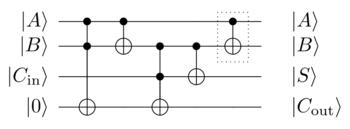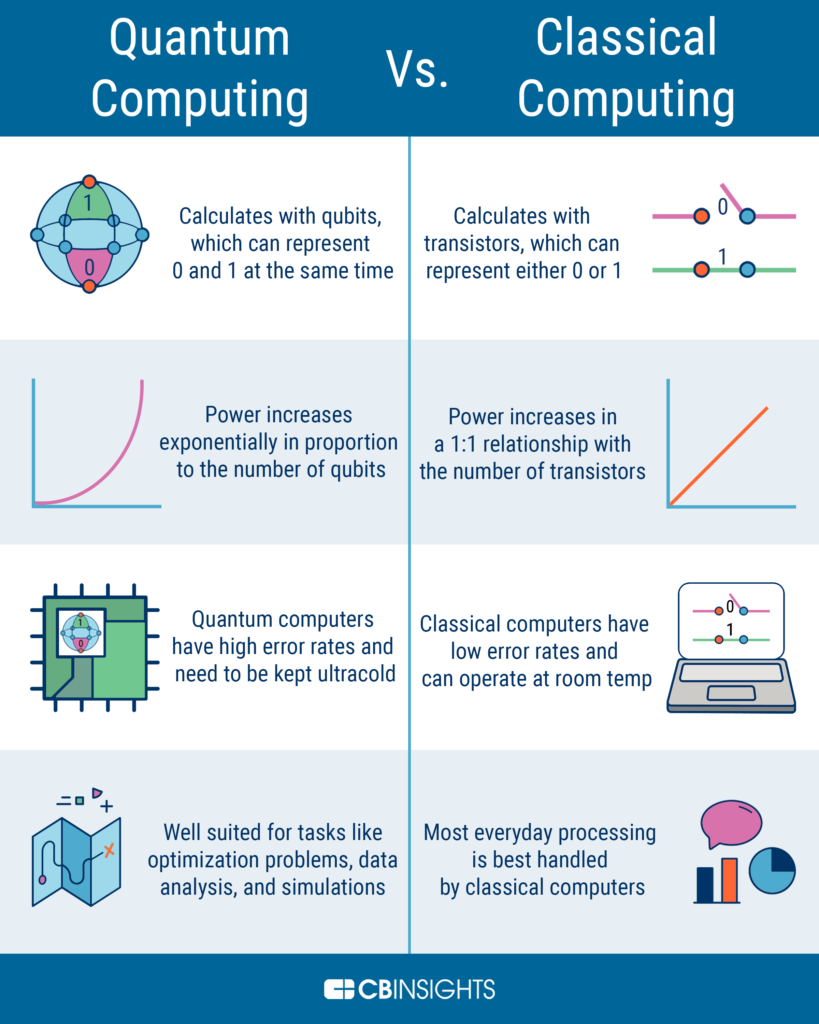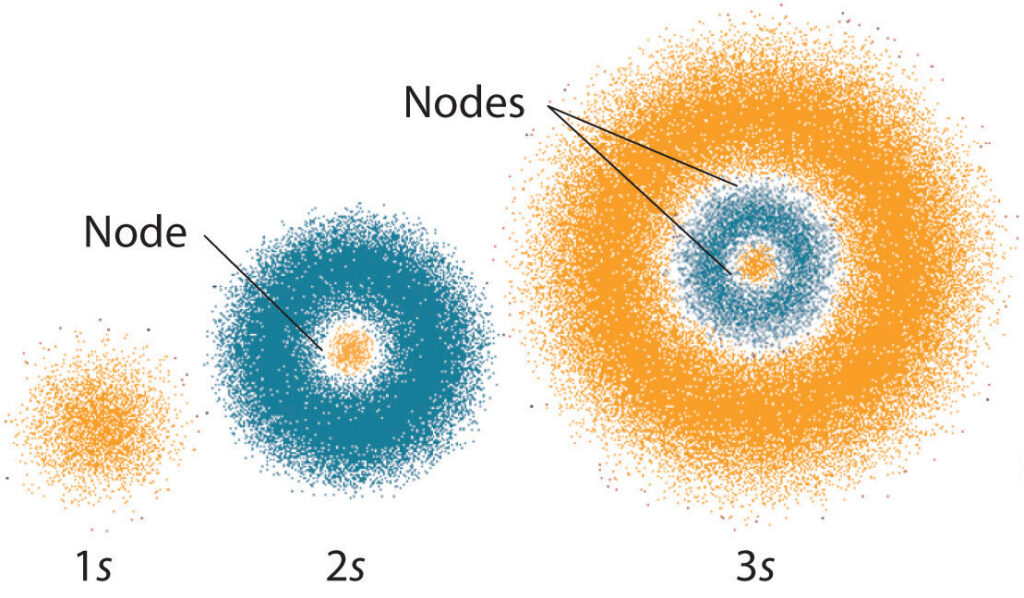Quantum gates are the building blocks of quantum computing, a rapidly growing field of research that has the potential to revolutionize the way we process and analyze data. These gates operate at the quantum level, manipulating the state of quantum bits or qubits, which can exist in multiple states simultaneously. While classical computers rely on binary digits, or bits, which can only be in one of two states, quantum computers use qubits, which can be in a superposition of states, allowing for the processing of exponentially more information.
The workings of quantum gates are shrouded in mystery for many, but they are essential for understanding the full potential of quantum computing. In this article, we will explore what quantum gates are, how they work, and the different types of gates used in quantum computing. We will delve into the complex concepts of quantum mechanics, such as superposition and entanglement, to provide a comprehensive understanding of how these gates operate and contribute to the power of quantum computing. So, let’s dive into the world of quantum gates and explore this fascinating topic together.
A quantum gate is a fundamental building block of quantum computers. It works by manipulating qubits, which are units of quantum information. To do this, a quantum gate applies a unitary transformation on a qubit or a set of qubits. This transformation can be used to entangle two or more qubits, or to prepare a qubit in a specific state. In addition, a quantum gate can be used to perform logical operations on qubits, such as NOT and XOR. The quantum gate can also be used to measure the state of a qubit, allowing for the reading of information stored in the qubits.

What is a Quantum Gate?
A quantum gate is an electronic device that enables the manipulation and control of individual quantum particles. It is used to control the flow of quantum information and is the basis of advanced quantum computing. Quantum gates can be used to create complex algorithms, simulate physical systems and enable the realization of new technologies.
How Does a Quantum Gate Work?
The Basics of Quantum Mechanics
Quantum mechanics is a scientific theory that explains the behavior of matter and energy at the atomic and subatomic level. It is based on the principles of quantum entanglement, which states that particles that are connected can have an effect on each other even if they are separated by great distances. This phenomenon is the basis of quantum computing.
Quantum gates work by manipulating the quantum particles in order to control the flow of information. The quantum particles are manipulated using a variety of techniques, including laser pulses and magnetic fields. These techniques allow quantum gates to control the flow of information in a quantum system.
Quantum Gates and Algorithms
Quantum gates are used to create algorithms which are essential for quantum computing. Algorithms are sets of instructions that tell a computer how to carry out a certain task. Quantum gates allow for the manipulation of quantum particles in order to create complex algorithms. The algorithms created by quantum gates are used to solve complex problems and can be used to simulate physical systems.
Quantum gates are also used to create quantum circuits. Quantum circuits are used to carry out quantum computations, which can be used to solve complex problems. Quantum circuits are made up of a network of quantum gates connected together. This network of quantum gates is used to manipulate the quantum particles in order to solve complex problems.
Quantum Computing and Technology
Quantum computing is being used to develop new technologies. Quantum computers are capable of solving complex problems that are beyond the capabilities of traditional computers. Quantum computers are being used to develop new technologies in fields such as machine learning, artificial intelligence, and cryptography.
Quantum computing is also being used to create new materials. These materials are created by manipulating the quantum particles in order to create materials with unique properties. These materials are being used to create new technologies, such as quantum sensors and materials that can be used to create more efficient energy systems.
Conclusion
Quantum gates are essential for the advancement of quantum computing. They are used to manipulate quantum particles in order to create complex algorithms, quantum circuits, and new materials. This technology is being used to develop new technologies and solve complex problems. Quantum gates are the foundation of the future of computing.
Frequently Asked Questions
Quantum gates are the basic building blocks of quantum computing. They allow for the manipulation of qubits, which are the fundamental units of quantum information. In this article, we will answer some common questions about quantum gates and how they work.
What is a quantum gate?
A quantum gate is a device that allows for the manipulation of qubits, which are the fundamental units of quantum information. In quantum computing, a quantum gate is a unitary transformation applied to a qubit or set of qubits in order to perform a quantum computation. A quantum gate can be thought of as a quantum version of a classical logic gate, such as an AND gate or an OR gate. The most common quantum gates are the Hadamard gate, the CNOT gate, the Toffoli gate, and the SWAP gate.
How does a quantum gate work?
A quantum gate works by manipulating the quantum state of a qubit or set of qubits. This manipulation is done through the application of a unitary transformation, which is a mathematical operation that preserves the quantum state of the qubits. The unitary transformation applied to the qubits is determined by the type of gate being used. For example, the Hadamard gate applies a unitary transformation that flips the qubit’s state from 0 to 1 and vice versa. The CNOT gate applies a unitary transformation that flips the qubit’s state if the target qubit is in the 1 state.
What are the types of quantum gates?
There are several types of quantum gates, each of which has its own specific set of properties and uses. The most common types of quantum gates are the Hadamard gate, the CNOT gate, the Toffoli gate, and the SWAP gate. The Hadamard gate is a single-qubit gate that flips the qubit’s state from 0 to 1 and vice versa. The CNOT gate is a two-qubit gate that flips the target qubit’s state if the control qubit is in the 1 state. The Toffoli gate is a three-qubit gate that flips the target qubit’s state if both of the control qubits are in the 1 state. The SWAP gate is a two-qubit gate that swaps the states of the two qubits.
What are the applications of quantum gates?
Quantum gates are used in a variety of applications, including quantum computing, quantum cryptography, and quantum sensing. In quantum computing, quantum gates are used to perform calculations and operations on qubits. In quantum cryptography, quantum gates are used to encrypt and decrypt data. In quantum sensing, quantum gates are used to measure the properties of particles and atoms.
How can I learn more about quantum gates?
To learn more about quantum gates and how they work, there are a variety of resources available. You can find tutorials, videos, and articles online, or you can take courses on quantum computing. Additionally, there are a number of books available on the subject, such as Quantum Computing for Everyone by Chris Bernhardt and Quantum Computing Explained by David McMahon. Finally, you can join online discussion groups and forums to discuss quantum computing and ask questions about quantum gates.

In conclusion, the concept of quantum gates is a fascinating and complex topic that has revolutionized the field of quantum computing. These gates are the building blocks of quantum circuits and allow for the manipulation of qubits, which are the fundamental units of quantum information. By applying various gate operations to qubits, researchers can perform complex computations that would take traditional computers years to complete.
As quantum computing technology continues to advance, the potential applications of quantum gates are endless. From cryptography to drug discovery and optimization, the power of quantum computing has the potential to transform multiple industries. While the concept may seem abstract and difficult to understand, the implications of quantum computing and its underlying principles are truly remarkable. As we continue to explore the possibilities of quantum gates, we can only imagine the incredible breakthroughs and discoveries that lie ahead.



